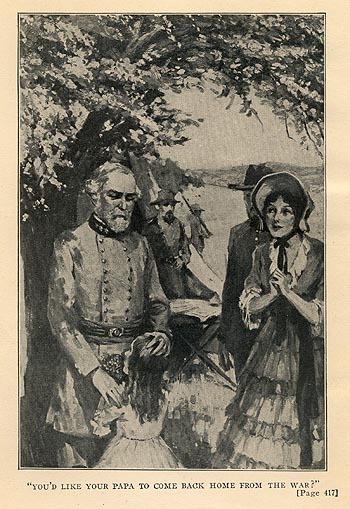 Frontispiece |
|
|
Almost twenty years after he wrote and published The Leopard's Spots to unwrite Uncle Tom's Cabin, Dixon took Stowe's novel on again in this novel about Robert E. Lee. It covers the years between 1852 and the surrender at Appomattox in 1865, though the most fully realized part of the narrative concerns John Brown's 1859 raid on Harper's Ferry, which was put down by U.S. troops under Lee's command. To Dixon, that raid was the flung torch that ignited the Civil War, but it was the popular success of Stowe's novel that made the nation combustible in the first place. Thus the story begins with the eight chapters available below. As hundreds of thousands of copies of Uncle Tom's Cabin are sweeping the North, a young Phil Sheridan is visiting the South for the first time, wondering if behind the apparent elegance and harmony of the Lee plantation lies the horror Stowe had disclosed in her novel, and Lee is approached by a Southern firebrand about writing a rebuttal to Stowe's book. That part of the story is fully told in these eight chapters. Uncle Tom's Cabin is only mentioned twice in the rest of Dixon's novel; it is in the second of these references (on page 311) that Dixon says "Uncle Tom's Cabin had prepared the stubble" that Brown's act had caused to "burst into flame." One other echo of Stowe's novel, or at least of her Key to Uncle Tom's Cabin, is Dixon's introductory "To the Reader," where he claims that he has "in [his] possession the proofs establishing each character and each event as set forth [in his story]. They are true beyond question." |
 Frontispiece |
|
